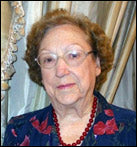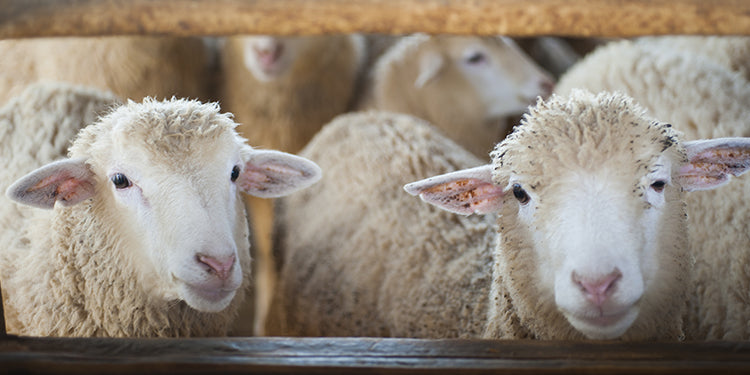
This is a guest blog post by Dr. Geraldine Haggard, who is a retired teacher, Reading Recovery teacher leader, author, and university teacher. She spent 37 years in the Plano, TX school system. She currently tutors, chairs a committee that gifts books to low-income students, teaches in her church, and serves as a facilitator in a program for grieving children.
The purpose of this blog is to share ideas for the use of leveled books to meet some of the Common Core State Standards for language in kindergarten . I’ve chosen two books to use as examples for my points. One is Hilda Hen , a fiction selection from the Kaleidoscope Collection . The second, Where Do Animals Live? , is expository and part of the My World Collection . The activities are based on the Common Core English Language Arts Standards for kindergarten. Science concepts are built into the language arts standards. I will share the particular language standards with suggestions for use of books to develop and deliver those standards. The label "L" before the standards designates Language. The 'K' is for kindergarten, and the numbers identify the specific standards. The language standards discussed here can be addressed by the two example books I’ve chosen.
CONVENTIONS OF STANDARD ENGLISH
 L.K.1.B. USE FREQUENTLY OCCURRING NOUNS AND VERBS:
The noun in
Hilda Hen
is 'hen.' The noun in
Where Do Animals Live?
is 'animals'. The main verb is 'live.'
L.K.1.B. USE FREQUENTLY OCCURRING NOUNS AND VERBS:
The noun in
Hilda Hen
is 'hen.' The noun in
Where Do Animals Live?
is 'animals'. The main verb is 'live.'
L.K.1.D. UNDERSTAND AND USE QUESTION WORDS
(interrogatives): The question word in
Where Do Animals Live?
is 'where.' Use this word often in discussions.
L.K.1.F. PRODUCE AND EXPAND COMPLETE SENTENCES IN SHARED LANGUAGE ACTIVITIES:
You can model complete sentences and prompt the students to do the same. This can be done during discussions, the use of language experience activities, or shared writing. "How can I say that in a complete sentence?" Expanding a sentence can be prompted with questions about something in a sentence.
L
.K.2. DEMONSTRATE COMMAND OF THE CONVENTIONS OF STANDARD ENGLISH (capitalization and punctuation):
As you read the books, model and ask the students to find capital letters and talk about why they were used. The comma is modeled by pausing when a comma is seen. The children recognize it as a breathing signal, and you can say, "I saw a comma and knew to take a breath. Find a comma. Let's practice reading that sentence using the comma." The use of the capital 'I' can be explained. "If you were talking you would not say your name. You would say 'I'. 'I' is a word for the name of a person."
L.K.2.B. RECOGNIZE AND NAME END PUNCTUATION: Hilda Hen is composed of one sentence on each page, until the last page that has two. Model the use of the period in reading and use the word 'period' as you talk about a pause as you read the end of the sentences on each page. “ Where Do Animals Live? includes a question mark in the title. Why?” Invite the children to ask questions. Ask them to frame the question mark in the title of Where Do Animals Live? What will the book tell them?
L.K.2.D. SPELL SIMPLE WORDS PHONETICALLY BY DRAWING ON KNOWLEDGE OF SOUND-LETTER RELATIONSHIPS: Use the words 'had’ and 'sat' from Hilda Hen to build other words that end or start like these two words. Provide plastic letters or individual whiteboards for the students. You might say and stretch the word and use it in a sentence. Words like 'pen,' 'men,' bad,' and 'mad' could be used for the Hilda book. Ask the children to say and build the word from the book first and then build the new word.
VOCABULARY ACQUISITION AND USE
 L.K.4. DETERMINE OR CLARIFY THE MEANING OF UNKNOWN AND MULTIPLE-MEANING WORDS:
Where Do Animals Live
? contains some words that all students might not have in their speaking vocabularies. The words 'some,' 'nests,' and 'ground' are examples. The word 'some' could be modeled as the teacher asks, "Do you think all animals live in the same kind of home? We use the word 'some' when we are not talking about all of a group." Ask the children to find and frame the word 'Some' on each page of the book. What is the title telling us? Not all animals live in the same kind of homes. The meaning of the words 'nests' and 'ground' can be explored as children look at the pictures in the book. What do they see that could tell them the meanings of the words? Ask them to describe each home.
L.K.4. DETERMINE OR CLARIFY THE MEANING OF UNKNOWN AND MULTIPLE-MEANING WORDS:
Where Do Animals Live
? contains some words that all students might not have in their speaking vocabularies. The words 'some,' 'nests,' and 'ground' are examples. The word 'some' could be modeled as the teacher asks, "Do you think all animals live in the same kind of home? We use the word 'some' when we are not talking about all of a group." Ask the children to find and frame the word 'Some' on each page of the book. What is the title telling us? Not all animals live in the same kind of homes. The meaning of the words 'nests' and 'ground' can be explored as children look at the pictures in the book. What do they see that could tell them the meanings of the words? Ask them to describe each home.
L.K.5. WITH GUIDANCE AND SUPPORT, EXPLORE WORD RELATIONSHIPS AND NUANCES IN WORD MEANING: Hilda Hen contains the words 'has' and 'had.' Ask questions like, “Why do you think the story teller used the word 'had' on the first five pages?" Accept ideas based on the number of eggs on the first pages. When they read the last page, she does not have any eggs. You might ask why the number of eggs changed and why she no longer "had" the eggs.
L.K.5.A. SORT COMMON OBJECTS INTO CATERGORIES (e.g., shapes, etc.): Create a puzzle by making copies of the pictures of the homes in the books. Cut the texts off and ask the students to match the texts to the pictures. As they read other books about animals, they could make lists of the homes where other animals live. These lists could be displayed where the children can add to the lists as they read and explore other books about animals. Books from Zoozoo Animal World would be great to have and use in guided reading and independent reading. Homes of other animals can be found in these books and added to the lists.
ADDITIONAL NOTES:
New words in content areas that are mastered in usage early will help the students in later grade levels as they read more difficult texts. Wordless books (such as those found in Zoozoo Into the Wild and My World ) can be used to stimulate discussion and use of words and phrases. More capable students could write texts for the wordless books. These uses of vocabulary can help facilitate oral language development for students who are second language learners and those who need to improve their syntax.
Several of these standards are part of the CONCEPTS OF PRINT assessment by Marie Clay. Students who show mastery of these concepts grow in language arts more quickly than those who do not. These are the basic tools used in reading and writing in the next two sets of standards for language in kindergarten.
Multiple readings of the books by children are needed if fluency and in-depth understanding is to be achieved. These readings can include shared, guided, and independent reading.
~~~
Geraldine Haggard is the author of several books from our Kaleidoscope Collection Series. For more information about the K aleidoscope Collection Series click HERE to return to our website or click the series highlight page below.













































![6 Fun and Easy Activities to Practice Sequencing [Grades K-1]](http://www.hameraypublishing.com/cdn/shop/articles/Red_Typographic_Announcement_Twitter_Post-5_bf1ae163-a998-4503-aa03-555b038d1b76_600x.png?v=1689961568)
![Leveraging Prior Knowledge Before Writing and Reading Practice [Grades 1–2]](http://www.hameraypublishing.com/cdn/shop/articles/Red_Typographic_Announcement_Twitter_Post-4_600x.png?v=1689961965)




